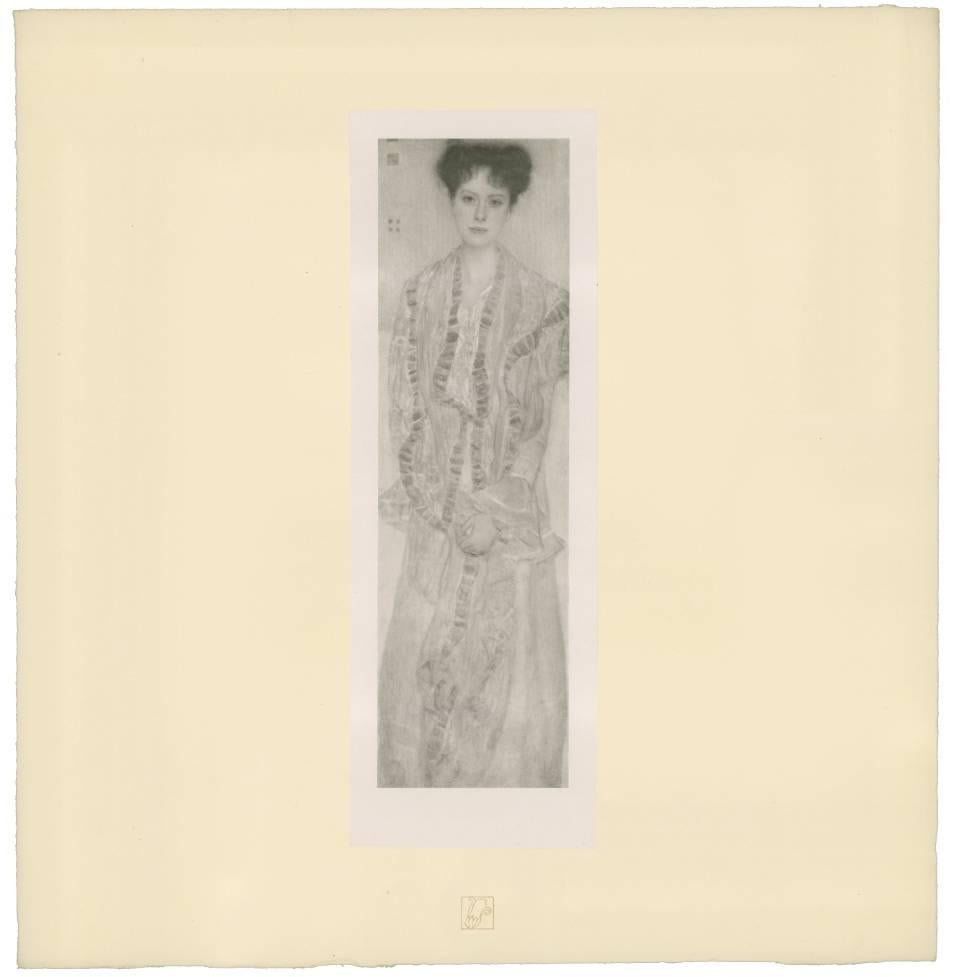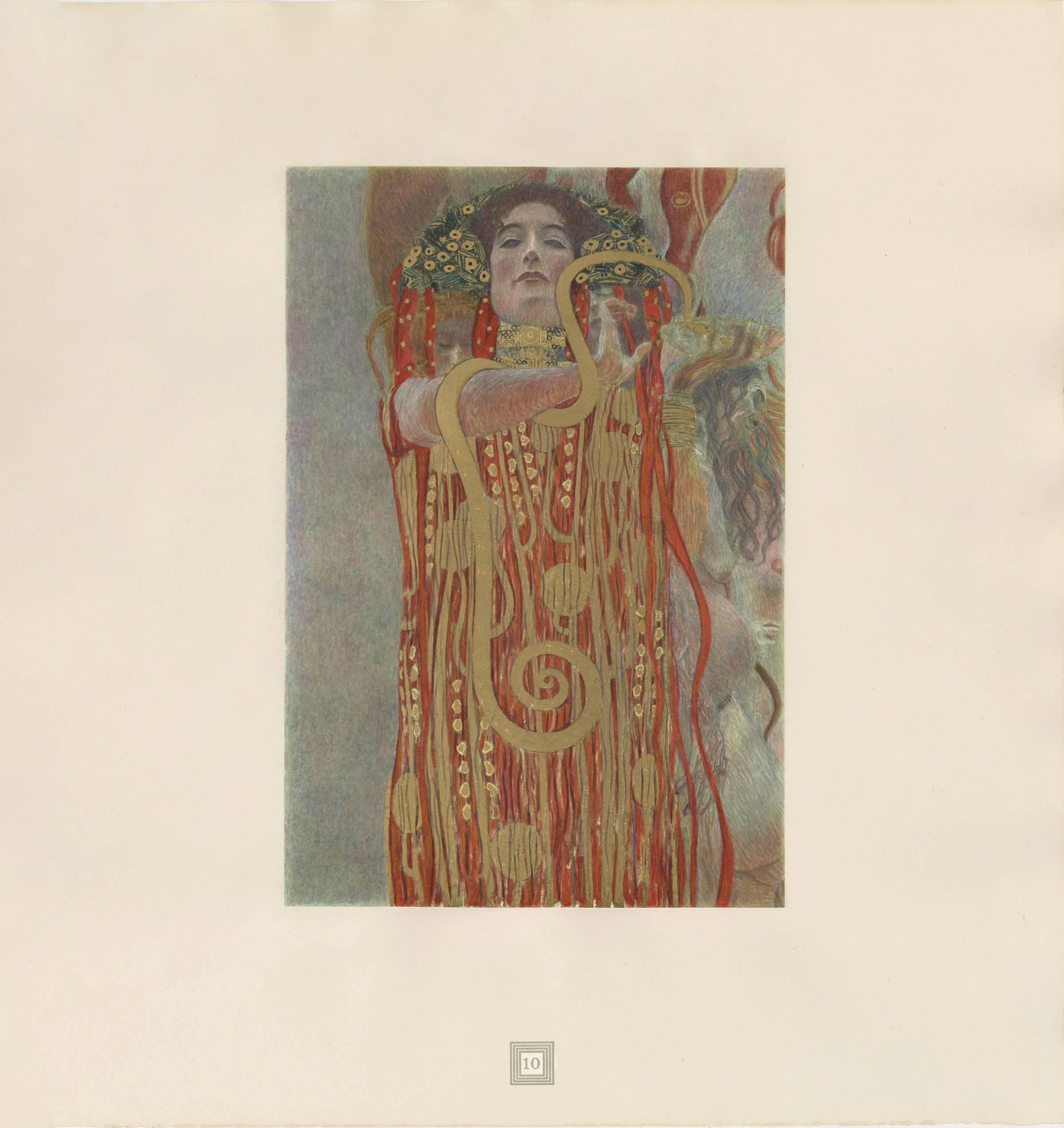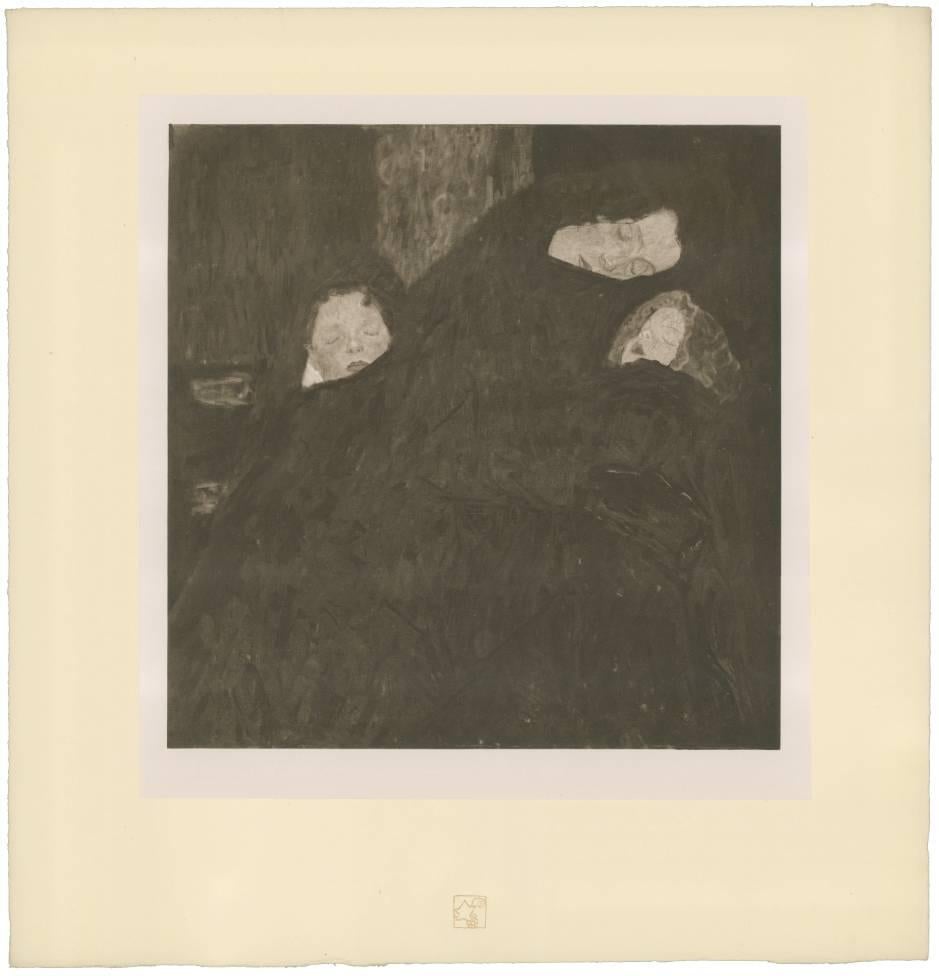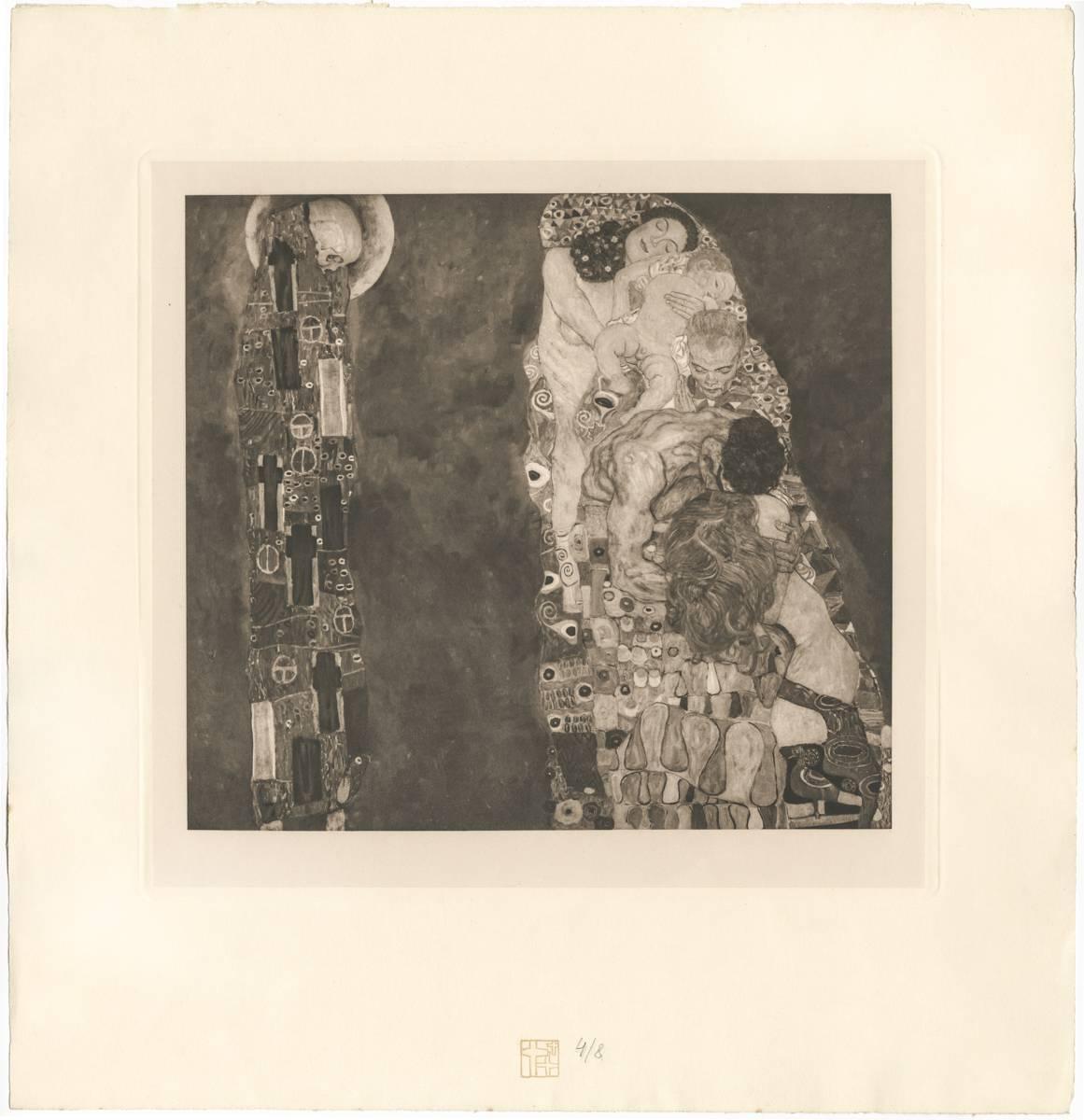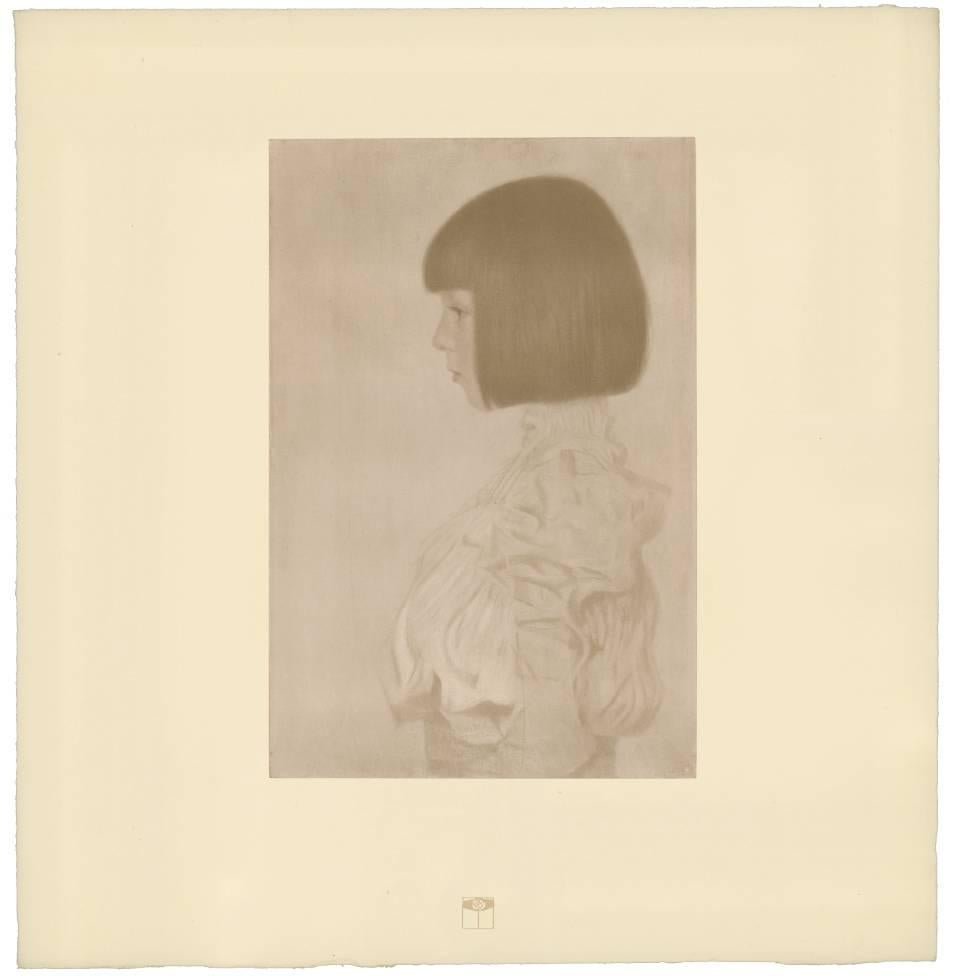Items Similar to R. Layni, Zeichnungen folio, "Torso" Collotype plate IV
Want more images or videos?
Request additional images or videos from the seller
1 of 6
(after) Egon Schiele & Max JaffeR. Layni, Zeichnungen folio, "Torso" Collotype plate IV1917
1917
About the Item
Egon Schiele (1890 – 1918), AUSTRIA
“ART CANNOT BE MODERN, ART IS PRIMORDIALLY ETERNAL.” -SCHIELE
Defiantly iconoclastic in life and art, Egon Schiele is esteemed for his masterful draftsmanship and precocious insight into the human condition. Part of the first wave of Austrian Modernism, he was swept away by the Viennese fascination with the tension between Life and Death (known in the works of Freud and his later interpreters as Eros and Thanatos). Life, identified with attraction, love, sexuality, and reproduction, and Death, represented by distortion, disease, repulsion, and hysteria, often appeared in the same composition, thereby suggesting the frightening life cycle of the human mind and body.
Young throughout his career, Schiele universalized his childhood traumas, thriving libido, insecurities, fears, and longings. His contorted line, jarring contrasts, and flat areas of color, demonstrate an early alliance with Expressionist philosophy and artists who were relentlessly frustrated by conventionality in all its forms. Schiele’s work embodied man’s disorientation and confusion in a seemingly absurd world, a world plagued by disease and war. It continues to be astonishingly relevant today, not just because it helped define Modernism but also because it revealed the dark and immutable aspects of the human condition.
Zeichnungen is a fine art print portfolio published by Verlag der Buchhandlung Richard Lanyi, Vienna, 1917, printed by Max Jaffe in an edition of 400 under the supervision of Egon Schiele. The plates and negatives of the 12 printed images of original watercolors and drawings by Schiele were destroyed after the run. Included with the 12 unbound sheets of mono-chromatic printed images was a Title Page and essay about Schiele’s work printed verso and a Justification Page listing the 12 untitled works’ owners and dates created. At the bottom of the Justification page, Schiele hand-signed, dated and numbered each copy. The collection came in a string-tied box whose cover displayed a printed self-portrait by Schiele.
Often cast as an enfant terrible, who was imprisoned in 1912 for publicly displaying lewd erotic-based paintings and drawings, Egon Schiele (1890-1918) was in actuality a central figure of the avant-garde at the time this portfolio was printed. Schiele’s Zeichnungen portfolio provides a rare example of the existing link between Schiele, the iconic artist, and his Viennese cultural milieu. As expressed in the portfolio’s text, Schiele's hand joined so many ways of seeing to capture the erotic, the intellectual, the esthetic. In the early years of 20th century Vienna, there was no clear separation between fine art, science, sociology and politics or philosophy; the cross-pollinating character of Viennese intellectual life was robust. Rather than cut off and confined to the university, intellectual activity thrived in social spheres such as coffee houses and salons. Huge overlap existed among these interdisciplinary circles. In a city number-ing approximately 2 million, only a few hundred comprised the cultural and political elite. Schiele exhibited widely, helped to organize exhibitions and had earned such a following that upon the death of Gustav Klimt in February the year following Zeichnungen’s publication, Schiele had naturally taken up the torch as Klimt’s successor. As leader of the 49th Vienna Secession Exhibition in 1918, the responsibility to create an exhibition poster and art for the main gallery fell on Schiele’s shoulders. Critical accolades for his Expressionist work made certain Schiele’s leading position in the world of art. At the height of this success, however; Schiele’s life was cut short by Spanish Influenza. He died at the age of 28. Shiele’s Zeichnungen portfolio is all the more valuable as an art piece which was realized during his protracted lifetime as well as for the key insights it provides into the intellectual circles which characterized early 20th century Vienna. Schiele’s portfolio was a picture of Vienna, itself: a collaboration between fine artist; art collectors; art promotors; idea disseminators; scientists; and printers.
Buchhandlung Richard Lanyi, whose publishing branch of the business published Schiele’s Zeichnungen portfolio, was indeed one of these significant cultural spheres and places to gather. On its first floor was the bookstore and lecture room. Notable Sociologist, Karl Kraus, was a regular there. On the second floor, Lanyi housed a veritable overflow of prints, portfolios and original art works by Klimt, Kokoschka, and others including Schiele. Artists and intellectuals from many disciplines quite literally rubbed shoulders in this intimate space with the likes of wealthy industrialists. Art held a unique place within this social setting. Certainly, it was collected as a symbol of status and displayed in homes by the wealthy elite. Art also served a dual purpose; within these intellectual social spheres, art was a form of scholarship. Art was conversation and fodder for the promulgation of ideas within multi-disciplinary areas of intellectual and cultural interest. It was intended to be shared. A portfolio of images re-producing works of art which were not widely accessible, by nature of their permanent locations and the cumbersomeness to move them, was therefore an especially important contribution to the dynamic inner workings of Viennese high culture. Schiele’s Zeichnungen quickly sold out. It is a testament to the level of interest for Schiele’s work among these closely-knit circles of collectors as well as a fine example of the vigorous intellectual culture which existed generally in Vienna at the time.
The collotype print form was at this time the preferred method of reproducing fine works of art. The printer of Schiele’s Zeichnungen portfolio was Max Jaffe, a Viennese specialist in fine art collotypes. This dichromate-based photographic process had been invented in 1856. The gelatin plates required delicate preparation involving light exposure, washing, and curing. They were inked with a velvet or leather roller and printed using a hand proof process with a light-pressured press. Collotype plates could not be re-used; the limited edition prints made from colloid inks were stable and posed no danger of fading like other photographic processes of the time. In fact, the fine reticulations created on the plates using the collotype process produced prints of extremely high quality.
- Creator:(after) Egon Schiele & Max Jaffe (1890 - 1918)
- Creation Year:1917
- Dimensions:Height: 18.5 in (46.99 cm)Width: 11 in (27.94 cm)
- Medium:
- Movement & Style:
- Period:
- Condition:Literature: "Egon Schiele: The Complete Works" by Jane Kallir. 1990. Pg. 509 (#1390).
- Gallery Location:Chicago, IL
- Reference Number:1stDibs: LU46736447502

About the Seller
5.0
Gold Seller
These expertly vetted sellers are highly rated and consistently exceed customer expectations.
Established in 2013
1stDibs seller since 2016
82 sales on 1stDibs
Typical response time: 2 hours
- ShippingRetrieving quote...Ships From: Chicago, IL
- Return PolicyA return for this item may be initiated within 3 days of delivery.
More From This SellerView All
- Max Eisler Eine Nachlese folio “Hygieia” collotype printBy (after) Gustav KlimtLocated in Chicago, ILAfter Gustav Klimt, Max Eisler #10, Ausschnitt aus dem Bilde “Medizin”; multi-color collotype detail from Medicine, one of the faculty paintings for the Uni...Category
1930s Vienna Secession Figurative Prints
MaterialsPaper
- H.O. Miethke Das Werk folio "Portrait of Helene Klimt" collotype printBy Gustav Klimt & K.K. Hof-und StaatsdruckereiLocated in Chicago, ILDAS WERK GUSTAV KLIMTS, a portfolio of 50 prints, ten of which are multicolor collotypes on chine colle paper laid down on hand-made heavy cream wove paper with deckled edges; under ...Category
Early 1900s Vienna Secession Figurative Prints
MaterialsPaper
- Max Eisler Eine Nachlese folio "Lady in a Feathered Hat" collotypeBy (after) Gustav KlimtLocated in Chicago, ILAfter Gustav Klimt, Max Eisler Plate #2, Dame mit Blumenhut (aka The Violet Hat); sepia monochrome collotype after the 1909 painting in oil on canvas. ...Category
1930s Vienna Secession Figurative Prints
MaterialsPaper
- Max Eisler Eine Nachlese folio "Portrait of Friederike Marie Beer" collotypeBy (after) Gustav KlimtLocated in Chicago, ILAfter Gustav Klimt, Max Eisler Plate #24, Bildnis Friederike Maria Beer; multi-color collotype after the 1916 painting in oil on canvas. GUSTAV KLIMT EINE NACHLESE (GUSTAV KLIMT AN ...Category
1930s Vienna Secession Figurative Prints
MaterialsPaper
- H.O. Miethke Das Werk folio "Train of the Dead" collotype printBy Gustav Klimt & K.K. Hof-und StaatsdruckereiLocated in Chicago, ILDAS WERK GUSTAV KLIMTS, a portfolio of 50 prints, ten of which are multicolor collotypes on chine colle paper laid down on hand-made heavy cream wove paper with deckled edges; under ...Category
Early 1900s Vienna Secession Figurative Prints
MaterialsPaper
- H.O. Miethke Das Werk folio "The Three Ages of Woman" collotype printBy Gustav Klimt & K.K. Hof-und StaatsdruckereiLocated in Chicago, ILDAS WERK GUSTAV KLIMTS, a portfolio of 50 prints, ten of which are multicolor collotypes on chine colle paper laid down on hand-made heavy cream wove paper with deckled edges; under ...Category
Early 1900s Vienna Secession Figurative Prints
MaterialsPaper
You May Also Like
- Original Vintage Secession Poster celebrating the emperor's jubileeLocated in Zurich, CHOriginal Vintage Poster by the Austrian artist Ferdinand Ludwig Graf, a member of the Hagenbund. This Viennese artist association moved as soon a...Category
Early 1900s Vienna Secession Figurative Prints
MaterialsPaper
- Untitled WoodcutLocated in Wilton, CTOriginal hand-colored woodcut from a portfolio of Secessionist fashion illustrations. Signed in the lower right margin by the artist, Reni Schaschl (1895-1979), a talented member of...Category
1910s Vienna Secession Figurative Prints
MaterialsWoodcut
- Der PolsterBy Max KurzweilLocated in New York, NYKurzweil, Maximilian. Der Polster, 1903. Color woodcut on japon. Included as an insert in Pan. Unsigned. Framed.11 1/4 x 10 1/4. 1 Ref: Hofstatter, p. 241; Pabst, p. 154. Maximillian Kurzweil was the co-founder of the Vienna Secession in 1897 and editor and illustrator of the influential Secessionist magazine Ver Sacrum...Category
Early 1900s Vienna Secession Figurative Prints
MaterialsLithograph
- Mädchen am Fenster. 1906-08.By Oskar KokoschkaLocated in New York, NYMädchen am Fenster. 1906-08. Color lithograph printed on smooth card stock. Full margins. Tipped into a later presentaion folder, signed by the artist in pencil, on the recto. Published by the Wiener Werkstätte, Vienna, with the printed postcard text on verso. Among Kokoschka's earliest prints were a series of 14 postcards, the current work and the following lot that he produced for the Wiener Werkstätte. Wingler/Welz 4. Oskar Kokoschka was an Austrian artist, poet and playwright best known for his intense expressionistic portraits...Category
Early 1900s Vienna Secession Figurative Prints
MaterialsLithograph
- FruhlingBy Josef Siccard-RedlLocated in New York, NYSiccard-Redl, Josef. Fruhling, Ca 1910. Color wood engraving, Signed and titled in pencil by the artist. Little is known of this artist other than he worked in Vienna during the ...Category
1910s Vienna Secession Figurative Prints
MaterialsEngraving
- POLSTER (The Cushion)By Max KurzweilLocated in Santa Monica, CAMAXIMILLIAN KURZWEIL (Austrian 1867-1916) DER POLSTER / THE CUSHION, 1903. Color woodcut printed on laid japon paper, affixed as usual to a support sheet from its upper sheet edge...Category
Early 1900s Vienna Secession Figurative Prints
MaterialsWoodcut

